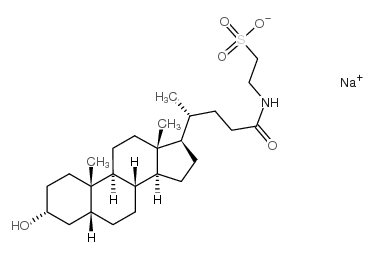Taurolithocholate-induced MRP2 retrieval involves MARCKS phosphorylation by protein kinase Cϵ in HUH-NTCP Cells.
Christopher M Schonhoff, Cynthia R L Webster, M Sawkat Anwer
文献索引:Hepatology 58(1) , 284-92, (2013)
全文:HTML全文
摘要
Taurolithocholate (TLC) acutely inhibits the biliary excretion of multidrug-resistant associated protein 2 (Mrp2) substrates by inducing Mrp2 retrieval from the canalicular membrane, whereas cyclic adenosine monophosphate (cAMP) increases plasma membrane (PM)-MRP2. The effect of TLC may be mediated via protein kinase Cϵ (PKCϵ). Myristoylated alanine-rich C kinase substrate (MARCKS) is a membrane-bound F-actin crosslinking protein and is phosphorylated by PKCs. MARCKS phosphorylation has been implicated in endocytosis, and the underlying mechanism appears to be the detachment of phosphorylated myristoylated alanine-rich C kinase substrate (pMARCKS) from the membrane. The aim of the present study was to test the hypothesis that TLC-induced MRP2 retrieval involves PKCϵ-mediated MARCKS phosphorylation. Studies were conducted in HuH7 cells stably transfected with sodium taurocholate cotransporting polypeptide (HuH-NTCP cells) and in rat hepatocytes. TLC increased PM-PKCϵ and decreased PM-MRP2 in both HuH-NTCP cells and hepatocytes. cAMP did not affect PM-PKCϵ and increased PM-MRP2 in these cells. In HuH-NTCP cells, dominant-negative (DN) PKCϵ reversed TLC-induced decreases in PM-MRP2 without affecting cAMP-induced increases in PM-MRP2. TLC, but not cAMP, increased MARCKS phosphorylation in HuH-NTCP cells and hepatocytes. TLC and phorbol myristate acetate increased cytosolic pMARCKS and decreased PM-MARCKS in HuH-NTCP cells. TLC failed to increase MARCKS phosphorylation in HuH-NTCP cells transfected with DN-PKCϵ, and this suggested PKCϵ-mediated phosphorylation of MARCKS by TLC. In HuH-NTCP cells transfected with phosphorylation-deficient MARCKS, TLC failed to increase MARCKS phosphorylation or decrease PM-MRP2.Taken together, these results support the hypothesis that TLC-induced MRP2 retrieval involves TLC-mediated activation of PKCϵ followed by MARCKS phosphorylation and consequent detachment of MARCKS from the membrane.Copyright © 2013 American Association for the Study of Liver Diseases.
相关化合物
| 结构式 | 名称/CAS号 | 分子式 | 全部文献 |
|---|---|---|---|
 |
Taurolithocholic Acid sodium salt
CAS:6042-32-6 |
C26H44NNaO5S |
|
Bile acid receptor TGR5 agonism induces NO production and re...
2013-07-01 [Arterioscler. Thromb. Vasc. Biol. 33(7) , 1663-9, (2013)] |
|
Angiotensin II protects primary rat hepatocytes against bile...
2012-01-01 [PLoS ONE 7(12) , e52647, (2012)] |
|
Bile acids induce pancreatic acinar cell injury and pancreat...
2013-01-04 [J. Biol. Chem. 288(1) , 570-80, (2013)] |
|
Complexation of tauro- and glyco-conjugated bile salts with ...
2007-10-01 [Electrophoresis 28(20) , 3745-52, (2007)] |
|
The bile acid receptor TGR5 (Gpbar-1) acts as a neurosteroid...
2010-11-15 [Glia 58(15) , 1794-805, (2010)] |